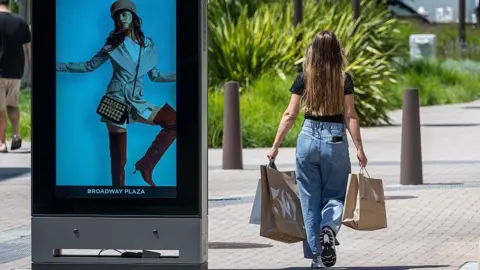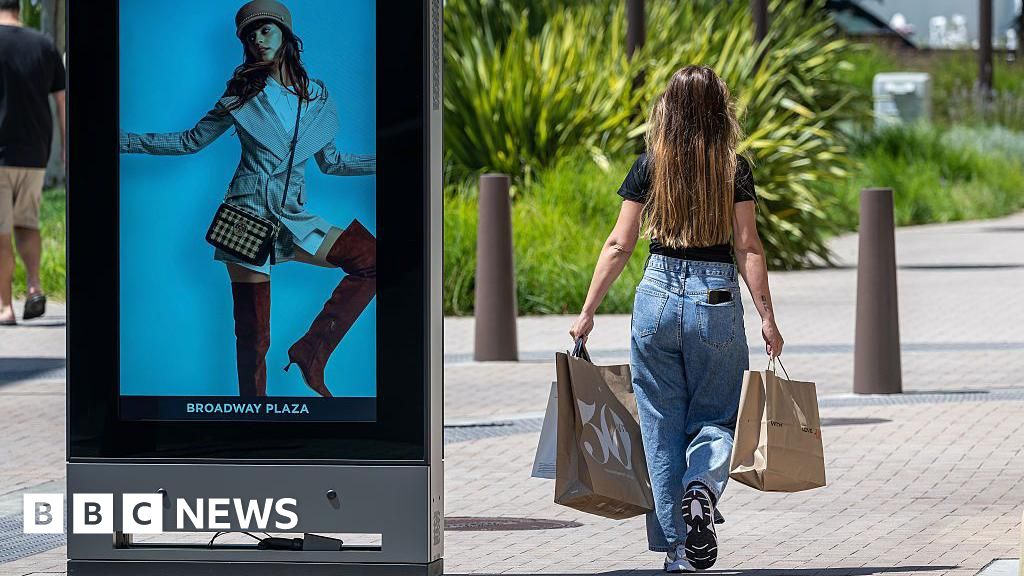 Bloomberg/Getty
Bloomberg/GettyAsk almost any economist and they will tell you: US President Donald Trump has been running risks with the world’s largest economy.
They say his tariffs and crackdown on immigrants risk a return of 1970s-esque “stagflation”, when a sudden oil shock prompted stagnant growth and spiralling prices, except this time the crisis would be self-inflicted.
The White House has just as steadfastly dismissed those concerns, attacking the experts – and, in the case of the US Bureau of Labor Statistics commissioner, firing her.
Questions about how it will all play out have left the US central bank in a state of paralysis, as it waits for data to clarify what’s happening before making a move on interest rates.
But after a busy few weeks of company updates, data on jobs and inflation, we still don’t really know.
The labour market is sending clearly worrisome signals.
Job creation was almost non-existent in May and June, sluggish in July, and the ranks of discouraged workers are growing.
That 1 August jobs report sent the stock market sinking and Trump into a tailspin, prompting him to fire the BLS commissioner.
A few days later, Moody’s Analytics economist Mark Zandi declared on social media that the economy was “on the precipice of a recession”.
That’s not the consensus.
For sure, the economy has slowed, growing at an annual rate of 1.2% in the first half of the year, down one percentage point from 2024.
But consumer spending, despite weakening, has stayed more resilient than many had expected, despite downbeat assessments by some firms.
Shares, after the 1 August hit, quickly resumed their upward march.
“We continue to struggle to see signs of weakness,” the chief financial officer of JPMorgan Chase, America’s biggest bank, told investors last month. “The consumer basically seems to be fine.”
That has raised hopes that the economy might power through, as it did a few years ago, to widespread surprise, despite getting hit with the highest inflation since the 1980s and a sharp rise in interest rates.
On Friday, the US government reported that spending at retailers and restaurants rose 0.5% from June to July – and that spending in June had been stronger than previously estimated.
“Consumers are down but not out,” wrote Michael Pearce, deputy chief US economist at Oxford Economics, which is predicting a modest recovery in spending in the months ahead, as tax cuts and a stock market recovery boost confidence.
“With the sluggish yet resilient real economy, the labor market is unlikely to deteriorate sharply.”
Challenges remain in the months ahead.
For now, households haven’t seen a dramatic run-up in prices at the store that might force them to cut back.
Consumer prices rose 2.7% in July compared with a year ago, the same pace as in June.
But many forecasters had not expected higher prices to start appearing until later this year, especially after Trump delayed some of his most aggressive tariff plans until this month.
Prices for hard-to-substitute, imported staples, like coffee and bananas, have already jumped.
Forecasters expect price increases to widen in the months ahead, as firms sell down pre-tariff stock and raise prices, now that they have more confidence about what the tariff policies might be.
That’s why there was so much focus on the producer price index, which measures wholesale prices commanded by US producers before they hit consumers, offering a clue to what’s coming.
It accelerated at the fastest pace in more than three years in July.
And worryingly, both consumer and producer inflation show the uptick in prices is not limited to goods, suggesting stagflation might very well be staging a return.
